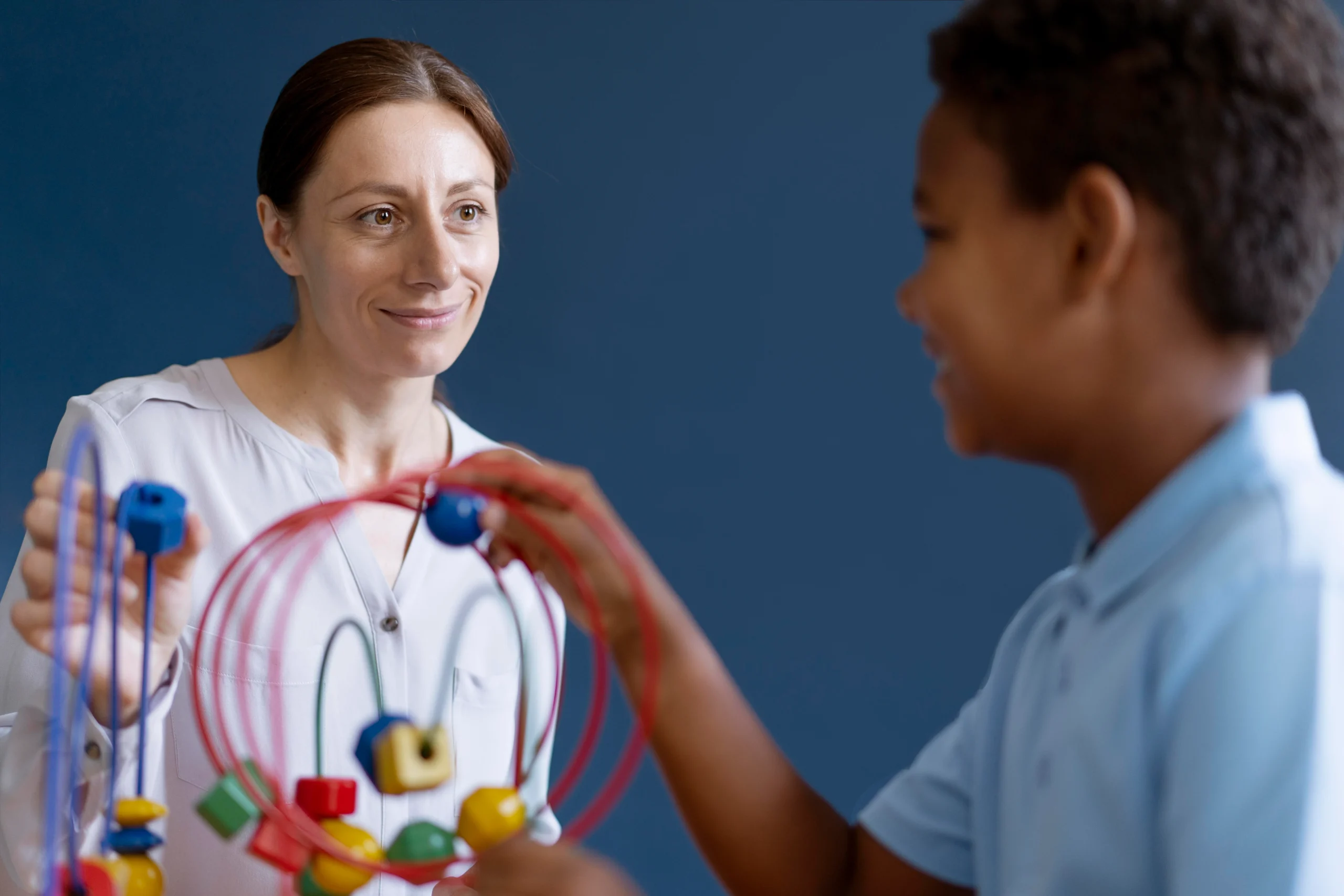Are you frustrated every time you read a book and think that you’re just reading a secret code? Or seeing your kid stuck at the same mathematical concepts that their classmates easily understand? You are not alone. Millions of people worldwide live with unique processing variations known as learning disabilities. They are not intelligence-related; intelligent people can be affected by these obstacles. They involve neurological differences in the reception, processing, storage, and expression of information.

Learning disability is the result of differences in brain structure and function that affect the method neural networks process, store, and retrieve data. Inconsistency in neural activation among language processing systems, working memory and executive control is consistently found in persons with learning and developmental disabilities.
Especially important, these differences are not a result of some deficiency but are an expression of neurodiversity that is not associated with level of intelligence, motivation, or environment. Learning disability and specific learning disability have a high lifetime prevalence rate and longitudinal research reveal that individuals still have problems even at old age. However, it may no longer be academic work or organizational issues but rather difficulties in organizing the organization, the workplace, or social communication.
The most common type on the broad spectrum is a specific learning disability (SLD), which is characterized by a serious problem learning one of the academic areas regardless of proper intelligence and teaching. According to the IDEA, SLDs should not be included as the cause of visual/hearing impairment, intellectual disability, emotional disturbance, or environmental disadvantage.
Research published in the Journal of learning disabilities highlights language based learning disability as the most prevalent SLD manifestation, with about 80% of the identified having the onset. The processing variants based on neurological differences in processing generate enduring barriers to automaticity, the ability to retrieve facts or procedures with ease, and available cognitive resources to think at higher levels.
Longitudinal studies show that untreated SLDs are strongly tied to academic disengagement, as well as how work on forms of explicit, systematic instruction in areas of deficit (such as phonemic awareness in dyslexia) can produce drastic results within 18-24 months


This language-processing disorder affects 5 to 17% of children and is characterized by deficits in phonological awareness, rapid naming, and working memory. Neurobiological studies show that the left part of the brain language networks, which are linked to reading, are less activated during reading.

It is manifested by the inability to automatize handwriting and spelling as well as difficulties in organizing written expression. There will also be kinesthetic motor planning difficulties identified through occupational therapy assessment.

Affecting 3-7% of the population, it is a math-specific disability characterized by a core deficit in number sense, magnitude comparison, and retrieval of arithmetic facts. It is underactivated in the intraparietal sulcus, which is the quantitative reasoning center of the brain.

Introduces a rather clear profile of good verbal skills and a major visual-spatial, lack of motor coordination, and social-interpretive weak points. Abnormalities of the white matter in the right hemisphere of the brain are also often associated with the pathology of nonverbal learning disability.

The approach to recognizing a learning disability involves close observation of the problems that someone cannot overcome despite being quite capable in other aspects of life. These difficulties persist over time; they are evident daily in academic, social, and functional environments, indicating neurological disparities in information processing and comprehension. Early identification of patterns can save lives, as intervention occurs at the right time.
Symptoms of learning disability vary largely depending on regard to age and type, but a common characteristic throughout them all is persistence regardless of effort and support. Speech delays, inability to rhyme, or difficulty in learning simple shapes and colors in preschoolers are red flags. Early elementary students may struggle with sounding out words or writing words in reverse (such as “b/d”) and may write very slowly and painstakingly. Inconsistent grades appear towards the end of elementary school.
Diagnosis of a learning disability is an elaborate and progressive procedure that aims at consolidating the experience but eliminating other conditions. It begins with the removal of factors such as vision or hearing deficits, environmental gaps (e.g., inadequate instruction), or traumas. Then, there is the issue of standardized testing that provides an imminent portrait:
Clinicians then study discrepancies, in which cognitive abilities are in dispute with scholarly underachievement, using DSM-5 standards; consistent problems lasting 6 months or longer, skills performance significantly below expectations, and emergence across school grades. New technologies, such as fMRI, hold the potential to establish unusual activation patterns in the brain, but only as an adjunct.

There are complex overlaps to make diagnosis difficult. ADHD occurs in 30-50% of cases, and anxiety lurks behind 25-40%– a frequent by-product of chronic school stress. The cultural testing bias may aptly term linguistic diversity as a disability, and the undetected minor initial symptoms may pour out of control when middle school academic requirements become intense.
Counterstigma Historical and recent stories are very effective. Consider the success of celebrity individuals with learning difficulties, such as financier Charles Schwab (who has dyslexia), Nobel laureate Dr. Carol Greider (who also has dyslexia), or actress Whoopi Goldberg (who has dyslexia). These figures are good examples that cognitive differences can exist but with profound talent when accorded proper care. Contemporary awareness campaigns also use a variety of platforms:
Digital Storying Projects: Sites such as Understood.org share the lived experiences
Neurodiversity in the Workplace: Organizations such as Microsoft and J.P. Morgan Chase are also actively recruiting individuals with learning disabilities.
Legislative Advocacy: Promoting a universal design in learning and better teacher training
ADHD is not founded on learning disabilities, but it is interested in problems with neurodevelopment disorders, including an impairment in executive functions. Its symptoms, however, affect the learning process significantly, and mostly comorbid learning disabilities exist most of the time that requires combined management approaches.
Autism spectrum disorder (ASD) is a distinct health condition that is expressed through the variations of social communication. Overall, it is not a learning disability, but research has established that 40-60% of the autistics have learning disabilities that require special solutions so that they can be trained.
The most significant ones are Dyslexia (reading and language processing), Dyscalculia (mathematical concepts), and Dysgraphia (written expression), as well as auditory processing disorder, Visual Processing Disorder, and Nonverbal Learning Disability. The two influence significant areas of the cognitive system whose symptomatic pattern they have.
The symptoms vary by type but commonly include problems with reading fluency, spelling accuracy, mathematical reasoning, written organization, complex commands, social cues, fine motor coordination, or a lack of integration with instruction, even among individuals with sufficient intelligence.
In NVLD, a person faces a significant challenge in processing spatial-related data, visual information, social complexities, and/or motor-related coordination despite having good verbal abilities. It affects abstract thinking, structuring, and even communication, which require special support schemes.
Learning disabilities are incurable as they are lasting and they are neurologically founded. Nonetheless, soundly structured, multisensory treatment has been established to develop compensatory pathways in the brain, enabling an individual to accomplish difficult-to-learn or master skills and attain academic or professional success with specific accommodations and techniques.
Subscribe to our regular newsletter updates and stay educated!